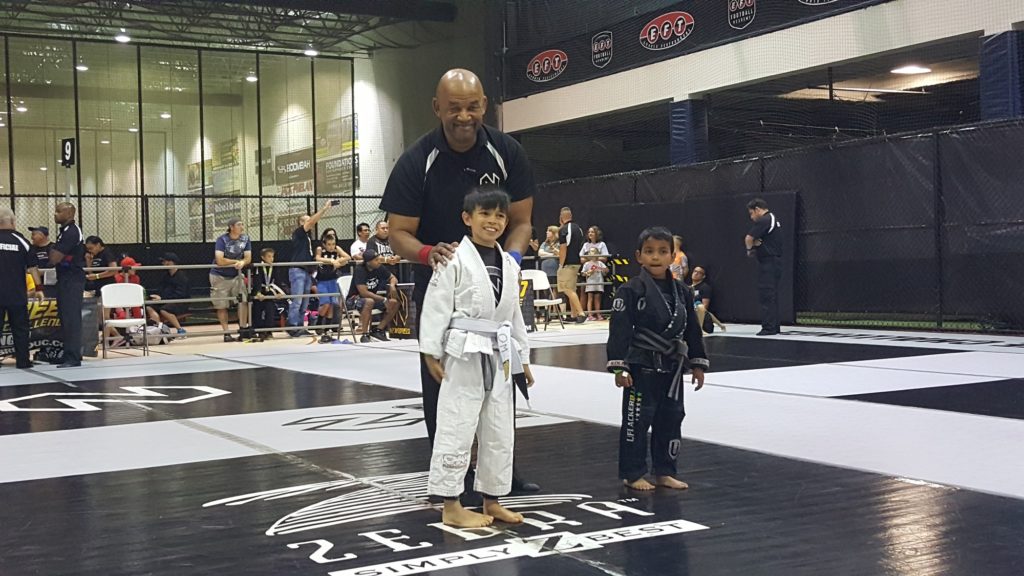
Fun
Jiu-jitsu, being mostly on the ground, means that instructors get on the floor to work with children at their level. Jiu Jitsu can be combined with Floortime therapy. Depending on the child’s development maturity, instructors gauge how much freedom to give and when to follow their lead. Practicing Jiu-jitsu can be easily perceived as a game for any child especially during live rolling. Instinctively, children try to escape when they are pinned underneath or give their best to stay on top while the other tries to escape.
Collaboration
Being in such close contact with another person stimulates their senses. Jiu jitsu put them in a position where they can feel the weight of their training partner, the pressure he/she applies, and also the sensation of being held. Over time, they usually become comfortable sharing the experience with their training partners and tend to open their communication circle. Jiu Jitsu also provide many opportunities for children to help each other learn techniques. The 2-ways communication help to build social skills and self-esteem.
Engagement
After being stuck in the same situation for a couple of times, children are more willing to know what to do which is the ideal opportunity to improve their learning skills. Once they observe the demonstration given by instructors, they will drill it with their training partner and try to apply the technique during live rolling. The technique might not work without executing all the key steps which gives children an incentive to pay attention and gives instructors a way to evaluate the child’s focus. Over time techniques become more complicated with a higher level of details which pushes children to continually learn.
Self-control
Jiu jitsu is known to improve fitness, balance, coordination and motor skills but most importantly it can also improve their body awareness. Correctly controlling your movement, weight distribution, and strength is essential, especially when partnering with a smaller training partner. During live rolling they will also be tested to control their emotions, which can be very difficult for some children.
Confidence
During live sparring, children are learning to apply the technique on a training partner that is not cooperating. It requires them to grapple their way into dominate positions or escape uncomfortable and compromising positions. It is physically and mentally demanding. Children learn early to not give up and recover from failures which help build their confidence.
Self-Defense
Children with lower confidence tend to be picked on by bullies who target easy prey. A child with Jiu-jitsu experience will be able to take the attacker to the ground and neutralize the situation without throwing a single punch. Not causing any damage helps to diffuse the situation without having it escalated.
These are my top 6 reasons why Jiu-Jitsu can be so beneficial for kids with autism and ADHD but there are many more such as improving:
-
- Respect
- Focus and Listening
- Learning Retention
- Courage
- Integrity
- Discipline